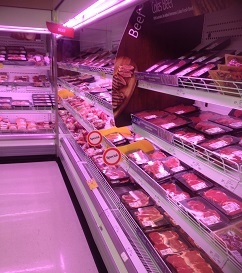Exercise 2 - Water Transport & Food - note photos in first response
FC-01x Future Cities (1st Run) - Exercise 2: "Stocks and Flows"

Uploaded on 2014-11-12 by Erics54
My Area is an established inner suburb 4kms from the city centre. My city is small with a population of approximately 1.5 Million people. The suburb is low density residential with a mix of low rise apartments and detached houses with little development activity. There is little commercial activity and no industry. The suburb is therefore predominantly a living, sleeping and private recreational area. Although Dwellings are significant they are only dynamic over a longer period with long lifecycles and some being heritage protected. The Most significant Stocks and Flows are **Water, Transport & Food**. *2. Describe these findings based on the concept of Stocks And Flows* Water - is distributed by water mains connecting an existing hill top reservoir (Stock) to each property (Flow). This reservoir is supplied by pumped water(Flow) a much larger Storage Dam (Stock) located up stream of the City. The Water supply is potable but is used for all activities - drinking, cooking, personal bathing, laundry and gardening (Flow). Waste water(Stock) is removed from the property and my suburb via drain lines (Stock and sewer mains(Stock) to a sewage treatment plant located several kilometers away (Flow). The treated waste (Stock) is discharged into a tidal estuary (Flow) Our Water supply is historically related to a lack of capital flow - the Great Depression where unemployed works built the structure by hand! Transport - Residents of the area use multiple modes of travel but predominantly use private motor vehicles. In my area there are 1.5 cars per dwelling or approximately 2400 (Stock) cars according to the last census in 2011. Approximately 1400(60%) of the working population (Stock)used private cars to journey to work(Flow) with another 470(20%) (Stock) taking public transport (Flow). My City has significant nodes outside the CBD( Density). My suburb houses predominantly Professional, managerial, Clerical and administrative workers totaling 63% (1440 persons) (Stock) of the total workers in my area. Additionally 'Journey to work' data for the city region that my suburb is located suggest that approximately 60% of all workers in the region ether work in the region or travel to the CBD (Flow). Combining these two aspects suggest that journeys are short and local(Flow) but this would need to be corroborated with more detailed research. Significantly the remaining 30% (Stock) of working population travels across town (Flow). This journey type is the most difficult for PT planners to resolve as it involves fewer people across more diverse destinations while still contributing to traffic congestion. Mid Afternoon 'School rush' ...heavy reliance on private vehicle and that Yellow and Blue PT bus has 3-5 people in it! despite only 10 min wait time Food - Typical of modern cities, my city has a food ditribution system that relies heavily on transport and refrigerated logistics chains. Agricultural produce (Stock) can be sourced locally, interstate and overseas (Flow). These may be shipped to my city's port, delivered by rail or road transport or in combination (Flow)(but a stock of transport infrastructure). Meat(Stock) is generally sourced nationally. This is transported by Road and or rail from the farm gate(Flow) to a regional or city based abattoir (Flow) the Processed meat (Stock) is further distributed generally by road(Flow) to wholesale or retail outlets. In some instances further re packaging is undertaken for retail food (Stock) sale. These food products are consumed creating nutrition and waste product. Waste (Stock) may be removed from my suburb as solid waste (Stock) by refuse vehicle, by residents recycling as garden mulch (Flows). Associated with this process is the product packaging taht might be also accounted here either as general waste or recyclable material (Stock). Liquid waste(Stock) may be reticulated away from the suburb by drains and sewers(Flows) mentioned over indication the interrelated nature of Stocks and Flows. [1]: https://edxuploads.s3.amazonaws.com/1415779638882840.jpg Looks appealing, but long logistics chains, short shelf life, packaging for landfill and....think of all that methane into the atmosphere! *3. Describe how these stock and flows could change in the future for our benefit.* Water - Local collection of rain water and the use of 'grey water are being considered and implement across the suburb and city. This will improve sustainability of the city where we have already gone close to water storage depletion. It will reduce the use of potable water for processes that do not require that level of water quality. Reduce pump station power use per capita. Transport - A reduction of private motor vehicle use in favor of PT or active transport will be more efficient use of scarce resource, reduce need for expensive road infrastructure upgrades, reduce our Carbon Footprint and improve noise and air quality. Food - Globilisation will continue with food production and more diverse range of foods and nationalities represented at the dinner table. This will likely enhance competition and will put pressure on the current duopoly arrangements in our city. But I also believe renewed interest in self sufficiency and community gardens with our ageing population keen to supplement their food supply sources will also add to competition and improve quality. Additionally more detailed analysis of Stocks and Flows may lead to decrease waste.